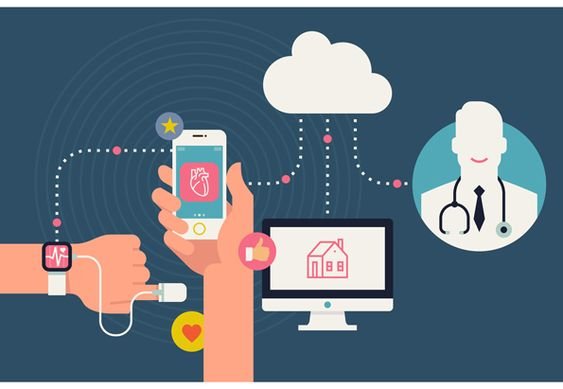The Development of Medical Devices
In the realm of modern healthcare, medical devices stand as indispensable tools that aid in diagnosis, treatment, monitoring, and prevention of various medical conditions. The development of medical devices is a multifaceted process that involves a combination of scientific innovation, engineering expertise, regulatory compliance, and clinical validation. From conception to commercialization, the journey of a medical device is marked by rigorous research, iterative design, meticulous testing, and regulatory approval. In this comprehensive article, we delve into the intricate process of developing medical devices, exploring the key stages, challenges, regulations, and future prospects shaping this dynamic field.

1. Introduction to Medical Device Development
Medical device development encompasses the creation of a wide range of instruments, apparatuses, machines, implants, and software used in healthcare settings for diagnosing, treating, monitoring, and preventing diseases and medical conditions. Medical devices play a crucial role in modern healthcare by providing healthcare professionals with essential tools and technologies to deliver high-quality care, improve patient outcomes, and enhance the overall efficiency of healthcare delivery.
The development of medical devices is a complex and iterative process that involves multiple stages, including conceptualization, design, prototyping, testing, validation, regulatory approval, and commercialization. Each stage of the development process requires careful planning, collaboration, and adherence to regulatory guidelines and quality standards to ensure the safety, efficacy, and performance of the device.
2. Key Stages in Medical Device Development
The development of a medical device typically follows a structured and iterative process that involves several key stages, each of which contributes to the overall design, development, and validation of the device. The following are the key stages in medical device development:
- Conceptualization and Ideation: The first stage of medical device development involves conceptualizing the idea for the device and defining its intended use, target population, and clinical application. During this stage, developers conduct market research, identify unmet medical needs, and brainstorm potential solutions to address those needs.
- Feasibility Assessment and Proof of Concept: Once the concept for the device is established, developers conduct a feasibility assessment to evaluate the technical, scientific, and commercial feasibility of the device. Proof-of-concept studies, prototype development, and preliminary testing are conducted to demonstrate the viability of the device and validate its potential for further development.
- Design and Engineering: The design and engineering stage involves translating the conceptual idea into a tangible product design that meets the desired specifications, performance requirements, and user needs. Design engineers, biomedical engineers, and product designers collaborate to create detailed design drawings, specifications, and prototypes of the device using computer-aided design (CAD) software and rapid prototyping techniques.
- Prototype Development and Testing: Once the initial design is finalized, developers create functional prototypes of the device for testing and evaluation. Prototype development involves fabricating prototype components, assembling prototype units, and conducting laboratory testing to assess the performance, functionality, and safety of the device under simulated conditions.
- Preclinical Testing and Validation: Preclinical testing involves conducting animal studies or benchtop experiments to evaluate the safety, efficacy, and performance of the device in a controlled laboratory setting. Preclinical studies provide essential data on device biocompatibility, mechanical properties, and functional characteristics, informing subsequent design iterations and regulatory submissions.
- Clinical Evaluation and Human Trials: Clinical evaluation involves conducting clinical trials or human studies to assess the safety, efficacy, and performance of the device in human subjects. Clinical trials are conducted in accordance with regulatory guidelines and ethical standards to generate clinical evidence supporting the device’s safety and effectiveness for its intended use.
- Regulatory Approval and Market Clearance: Regulatory approval is obtained from regulatory authorities, such as the Food and Drug Administration (FDA) in the United States or the European Medicines Agency (EMA) in Europe, to market and sell the device for its intended use. The regulatory approval process involves submitting a comprehensive regulatory submission, including preclinical data, clinical trial results, quality assurance documentation, and risk management plans, and undergoing rigorous review and evaluation by regulatory agencies.
- Commercialization and Postmarket Surveillance: Once regulatory approval is obtained, the device can be commercialized and marketed to healthcare providers, institutions, and consumers. Postmarket surveillance involves monitoring the device’s performance, safety, and quality after it has been introduced to the market, collecting feedback from users, and addressing any issues or adverse events that may arise during real-world use.
3. Challenges in Medical Device Development
The development of medical devices is fraught with various challenges and complexities that developers must navigate to bring a device from concept to market. Some key challenges in medical device development include:
- Regulatory Compliance: Meeting regulatory requirements and obtaining regulatory approval for medical devices can be a lengthy, complex, and costly process. Developers must navigate a complex regulatory landscape, including FDA regulations, European Union Medical Device Regulation (MDR), and international standards, to ensure compliance with applicable regulations and obtain market clearance for the device.
- Clinical Validation: Conducting clinical trials or human studies to generate clinical evidence supporting the safety and effectiveness of the device requires significant time, resources, and expertise. Recruiting study participants, obtaining informed consent, and complying with ethical and regulatory requirements can pose challenges for developers, particularly for novel or high-risk devices.
- Technical Complexity: Developing complex medical devices, such as implantable devices, diagnostic imaging systems, or robotic surgical systems, requires expertise in multiple disciplines, including engineering, materials science, and biomedical sciences. Overcoming technical challenges, such as device miniaturization, precision engineering, and biocompatibility, requires innovative approaches and specialized expertise.
- Cost and Funding: Developing medical devices is a capital-intensive endeavor that requires substantial investment in research, development, testing, and regulatory compliance. Securing funding for device development, either through private investment, government grants, or venture capital funding, can be challenging, particularly for early-stage startups or companies with limited resources.
- Market Competition: The medical device market is highly competitive, with numerous companies vying for market share and differentiation. Developing a novel, innovative, and differentiated device that offers unique features, benefits, or advantages over existing products is essential for success in the marketplace.

4. Regulatory Framework for Medical Devices
The development and marketing of medical devices are regulated by government agencies in various countries to ensure the safety, efficacy, and quality of devices available to patients and healthcare providers. In the United States, medical devices are regulated by the Food and Drug Administration (FDA) under the Federal Food, Drug, and Cosmetic Act (FD&C Act) and the Medical Device Amendments of 1976. The FDA classifies medical devices into three regulatory classes (Class I, Class II, and Class III) based on the level of risk associated with the device and imposes different regulatory requirements for each class.
In Europe, medical devices are regulated under the European Union Medical Device Regulation (MDR), which sets forth requirements for the design, manufacturing, testing, and marketing of medical devices within the European Union (EU) member states. The MDR establishes a comprehensive regulatory framework for medical devices, including requirements for device classification, conformity assessment, and postmarket surveillance, to ensure the safety and performance of devices marketed in the EU.
Other countries, such as Canada, Japan, and Australia, have their own regulatory agencies and frameworks for regulating medical devices, which may vary in terms of requirements, processes, and timelines for device approval and market clearance.
5. Future Trends and Innovations in Medical Device Development
The future of medical device development holds tremendous promise for innovation, advancement, and transformation in healthcare delivery. Emerging technologies, such as artificial intelligence, machine learning, 3D printing, and nanotechnology, offer exciting opportunities for developing next-generation medical devices with enhanced capabilities, functionalities, and therapeutic potential. Some key future trends and innovations in medical device development include:

- Personalized Medicine: Advances in genomics, biomarker analysis, and digital health technologies enable personalized medicine approaches tailored to individual patient characteristics, preferences, and genetic profiles. Personalized medical devices, such as implantable sensors, wearable monitors, and diagnostic assays, offer targeted therapies, precise diagnostics, and tailored interventions for patients with complex medical conditions.
- Smart Devices and Internet of Medical Things (IoMT): Smart medical devices and the Internet of Medical Things (IoMT) enable connectivity, interoperability, and data exchange between medical devices, electronic health records (EHR) systems, and healthcare providers. IoMT devices, such as wearable sensors, remote monitoring systems, and connected implants, enable real-time monitoring, data analytics, and remote patient management, enhancing healthcare delivery and patient engagement.
- Minimally Invasive Surgery and Robotics: Minimally invasive surgical techniques and robotic-assisted surgery continue to advance, enabling less invasive, more precise, and safer surgical procedures. Robotic surgical systems, such as the da Vinci Surgical System, offer enhanced visualization, dexterity, and control for surgeons, resulting in reduced patient trauma, shorter hospital stays, and faster recovery times.
- Implantable Bioelectronics and Neuromodulation: Implantable bioelectronic devices and neuromodulation therapies offer targeted interventions for neurological disorders, chronic pain, and inflammatory conditions. Neuromodulation devices, such as spinal cord stimulators, deep brain stimulators, and vagus nerve stimulators, modulate neural activity and regulate physiological functions, providing relief for patients with chronic pain, Parkinson’s disease, or epilepsy.
- Bioprinting and Tissue Engineering: 3D bioprinting and tissue engineering technologies enable the fabrication of complex tissue constructs, organoids, and bioartificial organs for transplantation, regenerative medicine, and drug testing applications. Bioprinted tissues, organoids, and scaffolds offer potential solutions for tissue regeneration, organ replacement, and personalized medicine, revolutionizing the field of transplantation and regenerative therapy.
6. Conclusion: Advancing Healthcare Through Innovation
In conclusion, the development of medical devices represents a dynamic and transformative process that drives innovation, advancement, and progress in healthcare delivery. From conceptualization to commercialization, the journey of a medical device is marked by collaboration, ingenuity, and dedication to improving patient care and outcomes. Despite challenges related to regulatory compliance, technical complexity, and market competition, the transformative potential of medical devices is vast, offering unprecedented opportunities for innovation, discovery, and improvement in healthcare. By harnessing the power of emerging technologies, fostering collaboration across disciplines, and embracing a culture of innovation, we can unlock new frontiers in medical device development, transforming the future of healthcare for generations to come.